Liverworts, Mosses, Lichens & Fungi
These groups have been well studied on Dawlish Warren over the years, but with little recent work on fungi in particular. Bryophytes are fully covered on this page and links to the lichen and fungi recorded on site are also available.
Bryophytes (Mosses and Liverworts) Related link:
British Bryological Society
A total of 66 species have been recorded on the Warren, at least 37 of these had been noted on site prior to 2000. Since then work, particularly by Frank Bryan and the Devon Bryophyte Group, have recorded additional species.
Last updated 27/03/22
Liverworts
Sphaerocarpos michelii (Micheli's Ballonwort): First discovered growing on the car park roundabout in 2019 and by the go karts in 2020. The only other Devon population for this nationally rare species is opposite the cycle shop on the landward side of the Entrance tunnel.
%2009215..jpg)
(c) Andrew Cunningham
Lunularia cruciata (Crescent-cup Liverwort): found growing around the Amusements and Boathouse.
Marchantia polymorpha (Common Liverwort): found growing in the car park ditches when first created.
Riccia crystallina (Blue Cystalwort): Another species first discovered growing on the car park roundabout in 2019, by the go karts in 2020 and on the Golf Course in 2022. The only other Devon population for this nationally rare species is also opposite the cycle shop on the landward side of the Entrance tunnel.
%2009025..jpg)
(c) Andrew Cunningham
Pellia epiphylla (Overleaf Pellia): Found in the Golf Course ditches in 2020.
Petalophyllum ralfsii (Petalwort): A 1997 visit by David Holyoak and other members of the BBS discovered this internationally rare species. Its occurrence, in addition to the wealth of other rare species present, was a major factor in the awarding of Special Area of Conservation status. This species is usually found on calcareous dune systems, the Warren is an acidic site and the populations are often found in areas with more alkaline habitats.
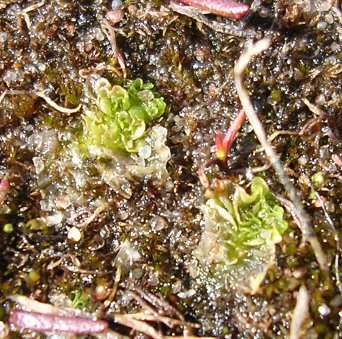
Fossombronia incurva (Weedy Frillwort): The only Devon location for this nationally scarce species. It was found on the same visit that discovered the Petalwort. Also found on the 13th fairway in 2020.
Metzagaria violacea (Bluish Veilwort): epiphyte; liverwort found on trunk and branches on willow.
Metzagaria furcata (Forked Veilwort): epiphyte; dark green liverwort found on trunk and branches on willow.
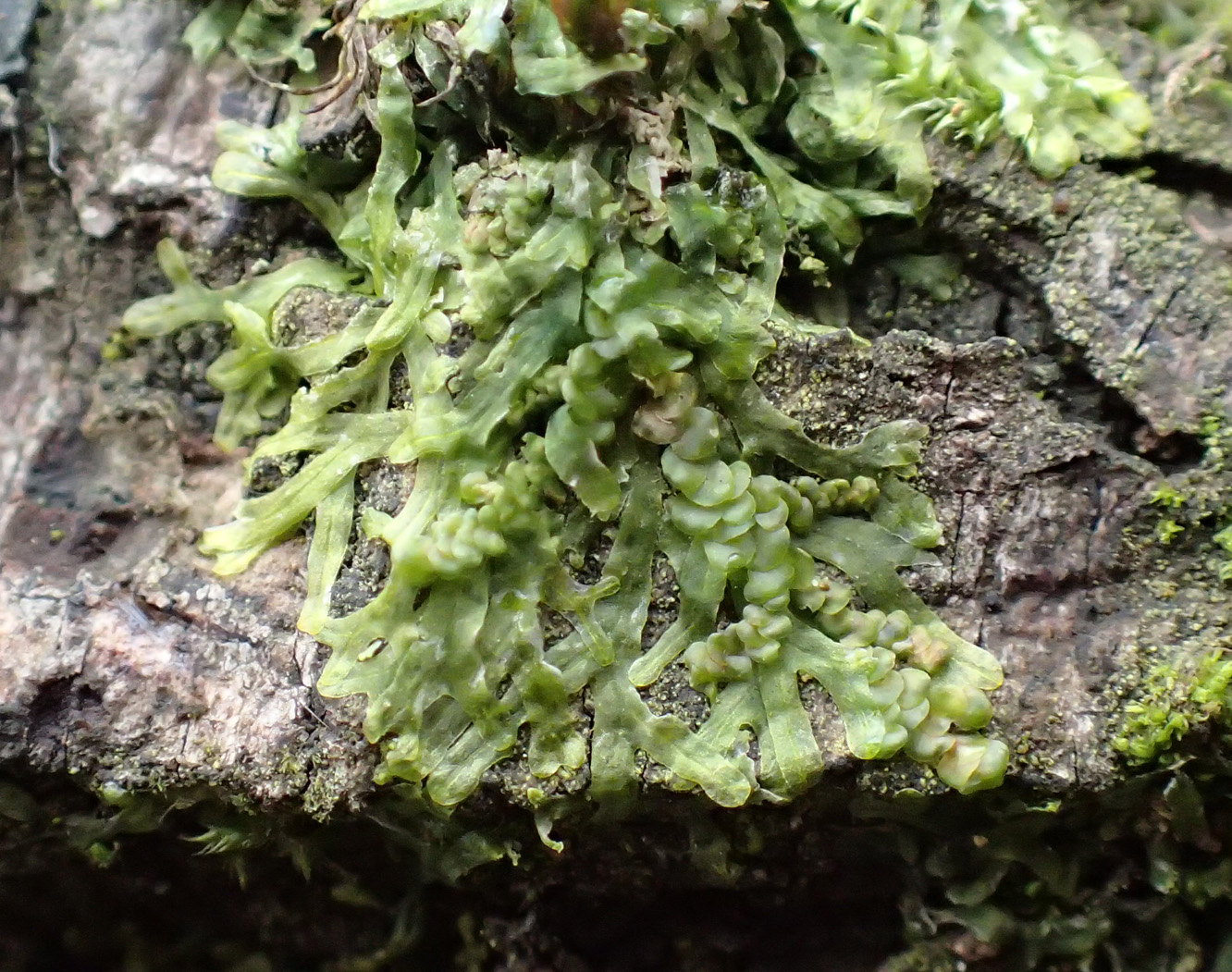
with Even Scalewort
Aneura pinguis (Greasewort): Several patches around Greenland Lake.
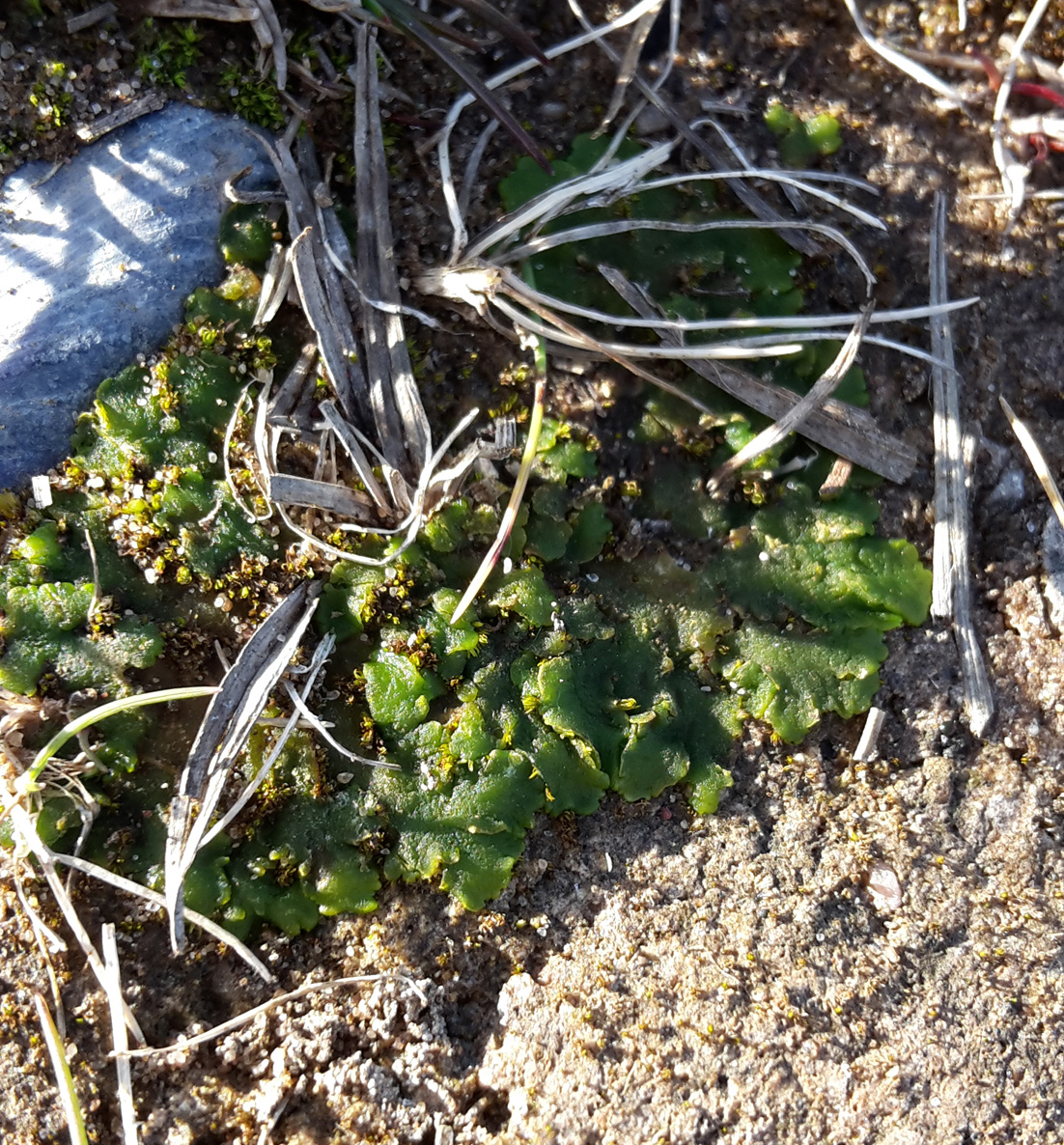
Riccardia chamedryfolia (Jagged Germanderwort): epiphyte; discovered on a willow by the Main Pond.
Radula complanata (Even Scalewort): epiphyte; found on trunks of willows.
Frullania tamarisci (Tamarisk Scalewort): epiphyte; purple liverwort found on trunk and branches of willows.
Frullania dilatata (Dilated Scalewort): epiphyte; found on trunk and branches of willows.
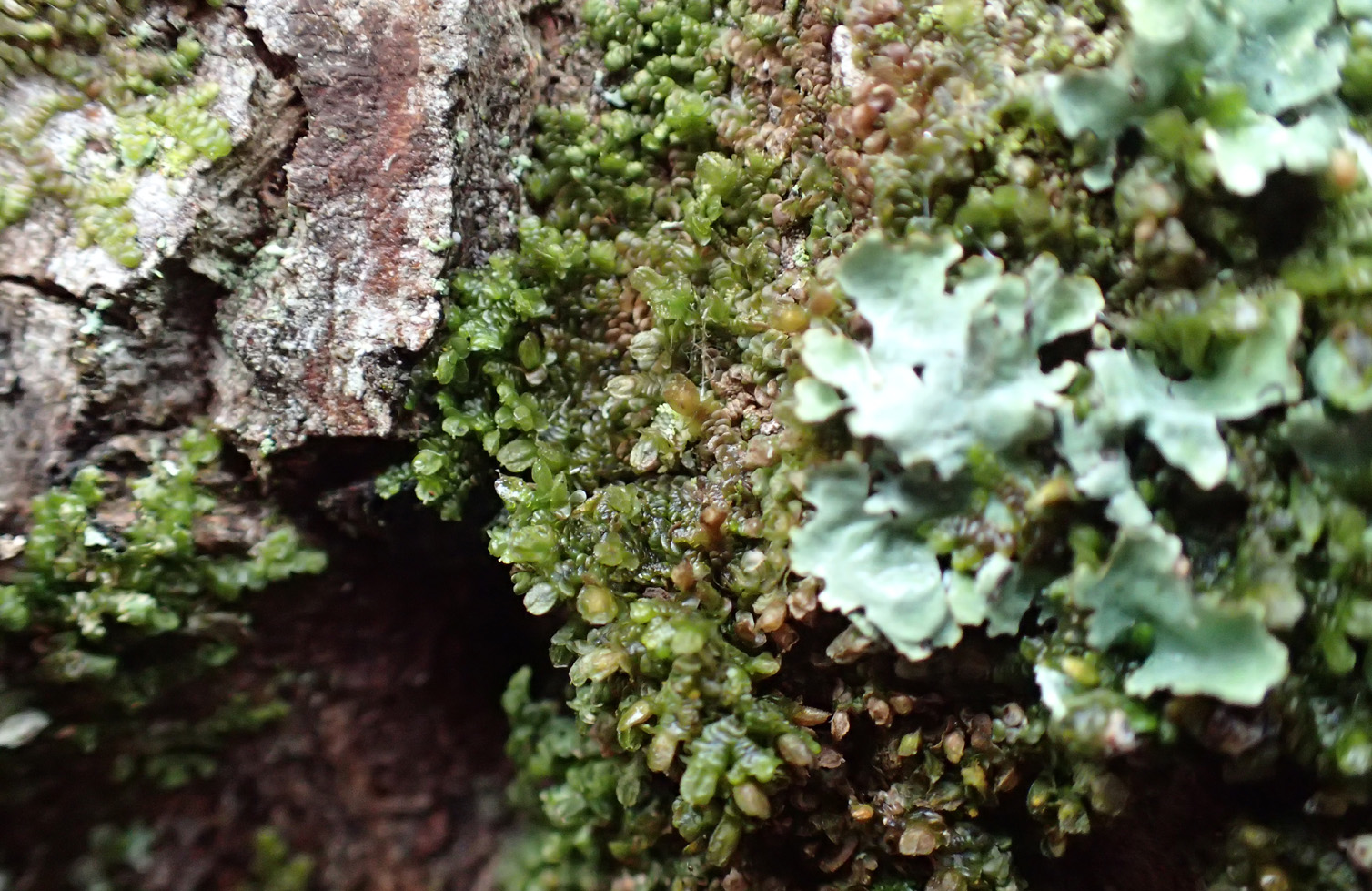
Cololejeunea minutissima (Minute Pouncewort): epiphyte; found on branches of willows around the Main Pond.
Microlejeunea ulicina (Fairy Beads):epiphyte; found on a sallow in the Entrance Bushes in 2021.
Lophocolea bidentata (Bifid Crestwort): found growing on rotting logs behind the Main Pond.
Mosses
Cryphaea heteromalla (Lateral Cryphaea): characteristic epiphyte of elders, apple and other trees and associated with O.affine and Z. viridissimus.
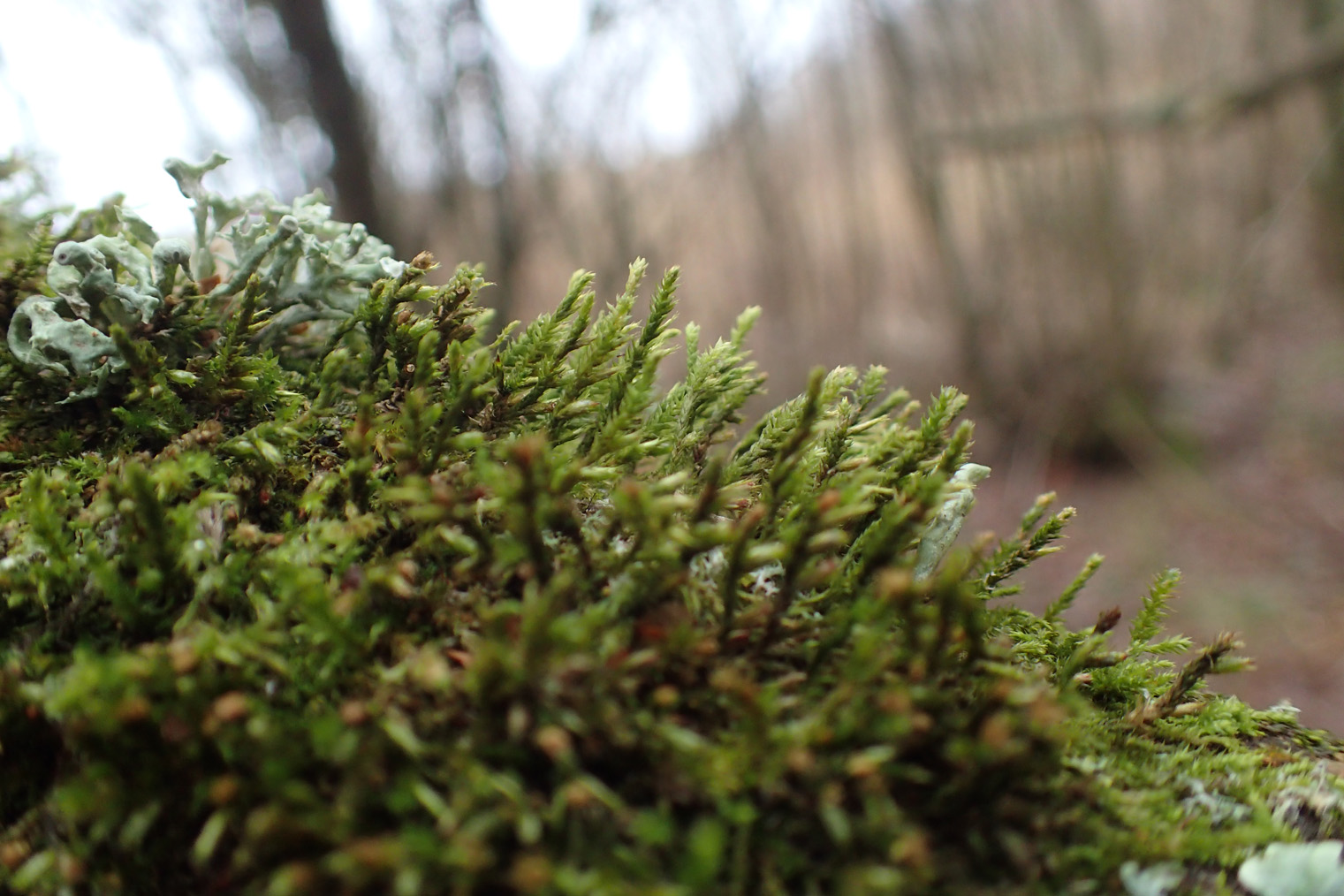
Polytrichum juniperinum (Juniper
Haircap): characteristic of more fixed dune grassland.
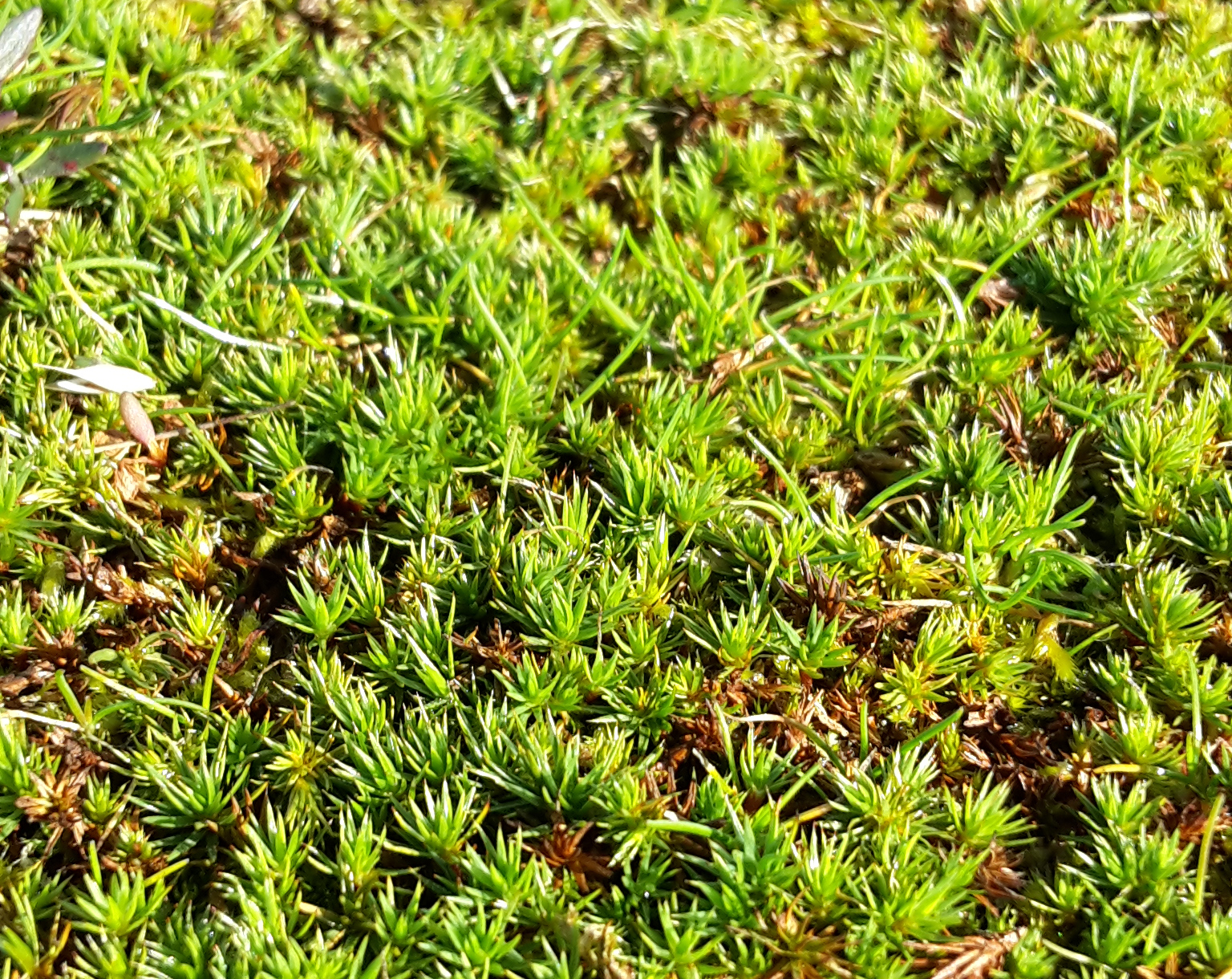
Funaria hygrometrica (Common Cord-moss): large mass of drooping green and orange capsules on coiled seta often found around fire sites.
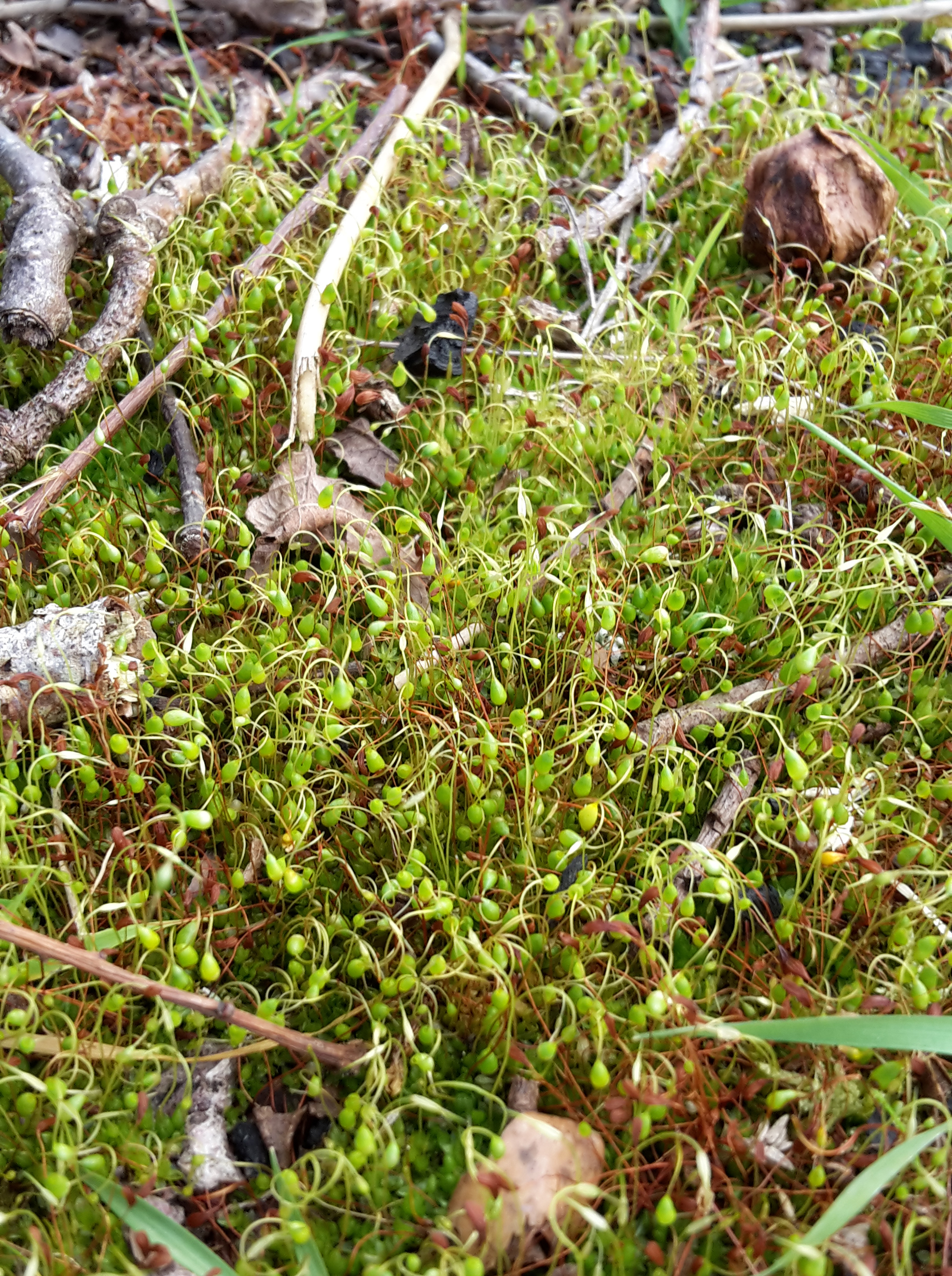
Grimmia pulvinata (Grey-cushioned Grimmia): Found on walls and buildings along the railway.
Fissidens adianthoides (Maidenhair Pocket-moss): found at one locality in a wet hollow on the edge of Greenland Lake.
Fissidens taxifolius (Common Pocket-moss): Discovered in the golf course ditches in 2021.
Ceratodon purpureus (Redshank): found on bare acid soil in Greenland Lake.
Cheilothela chloropus (Rabbit Moss): A small patch in Greenland Lake but with no recent reports. A nationally rare species Dawlish Warren is one of just 12 known UK sites.
Dicranum bonjeanii (Cripsed Fork-moss): found in areas of damp grassland.
Dicranum scoparium (Broom Fork-moss): common throughout dune grassland.
Campylopus introflexus (Heath Star Moss): found at several locations on dune grassland.
Trichostomum crispulum (Curly
Crisp-moss): found on mortar on walls near the railway.
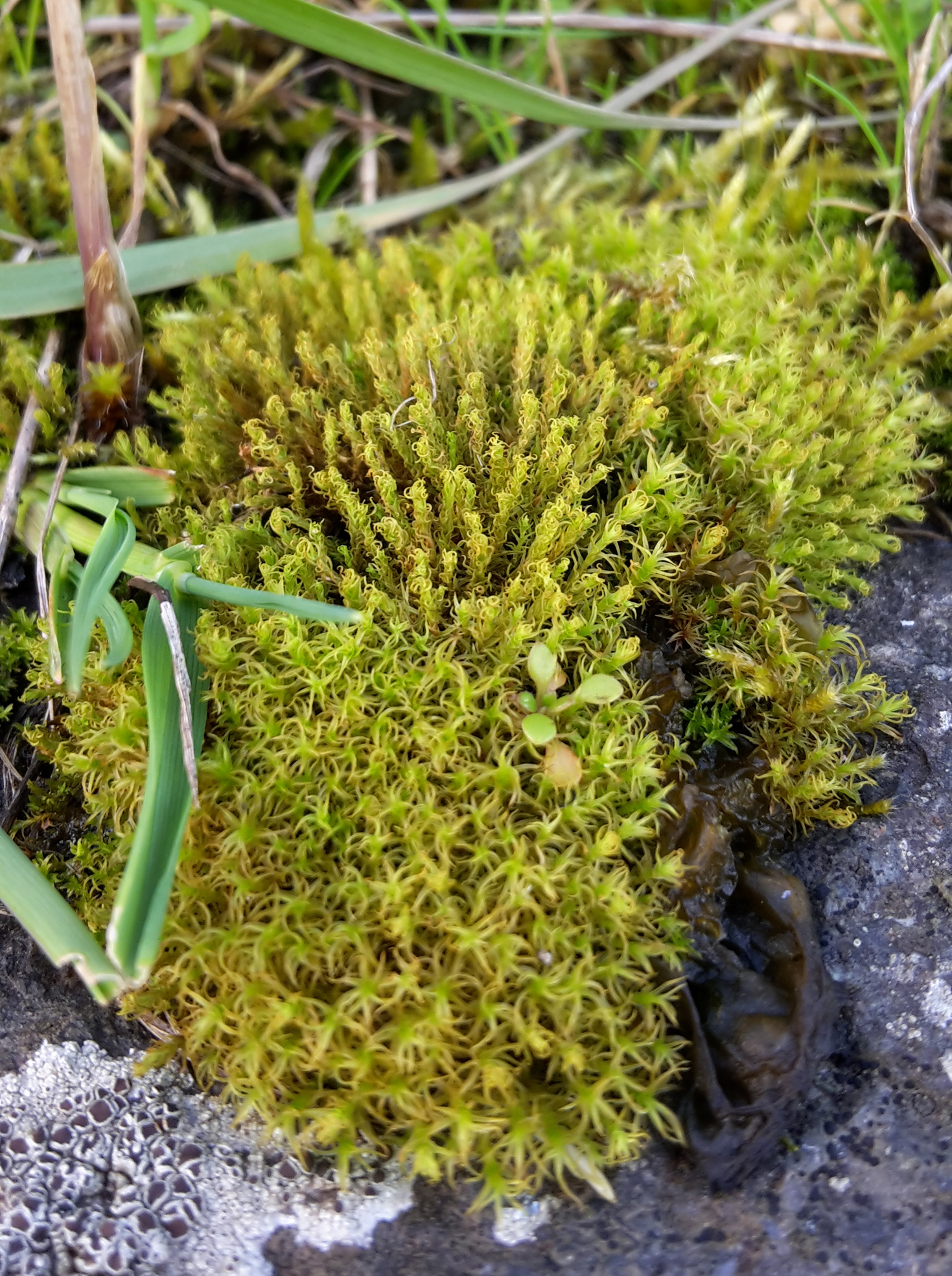
Barbula convoluta (Lesser Bird's-claw Beard-moss): common species of shallow and stony ground.
Barbula unguiculata (Bird's-claw Beard-moss): found around the car park.
Didymodon insulanus (Cylindric Beard-moss): found on areas of bare soil at the western end of the Warren.
Tortula muralis (Wall Screw-moss): found on rocks and walls along the railway.
Syntrichia ruraliformis (Sandhill Screw-moss): pioneer species widely distributed on mobile dune and stable dune grassland.
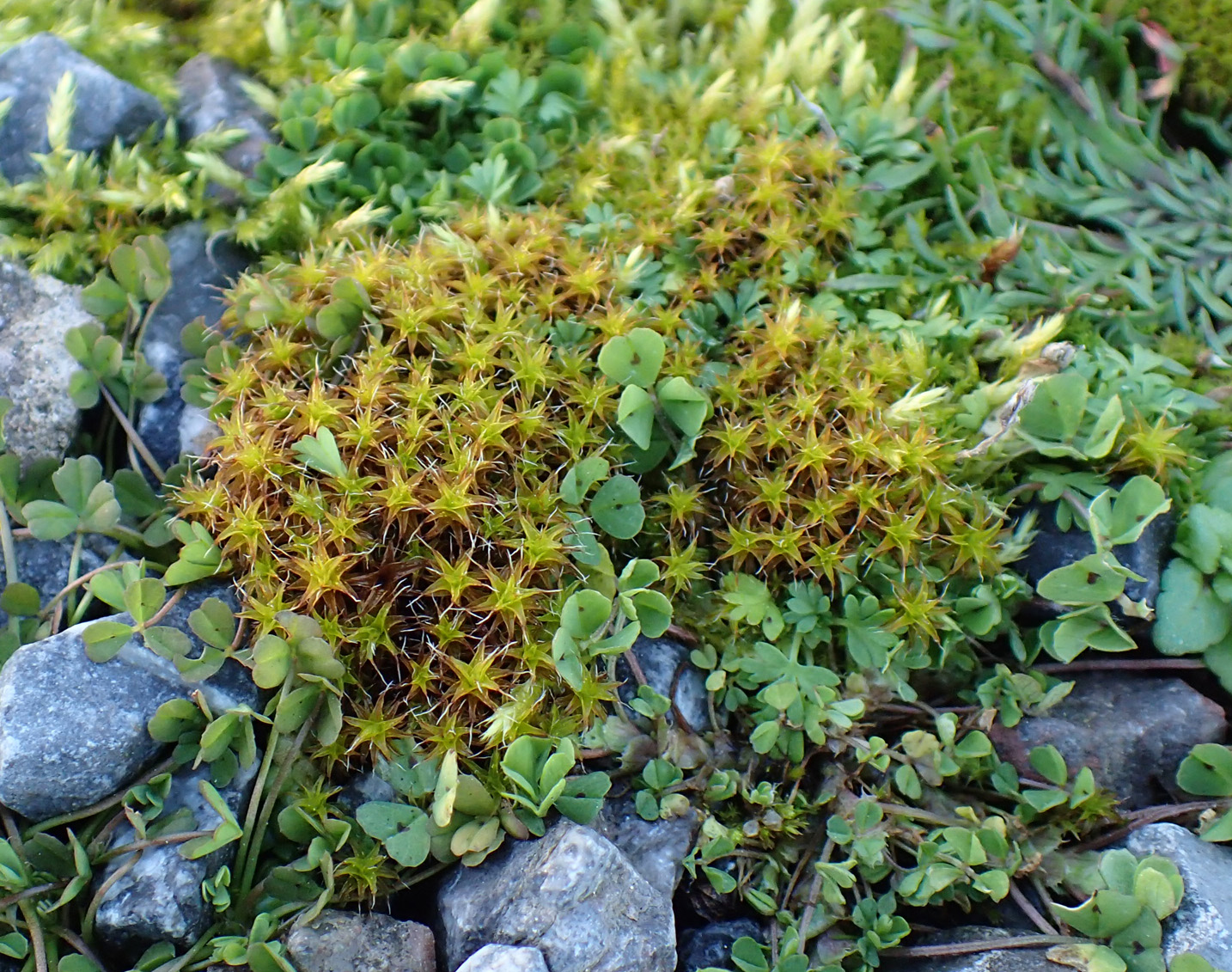
Syntrichia montanta (Intermediate Screw-moss): found on walls around the tunnel and on bare ground at the western end of the site.
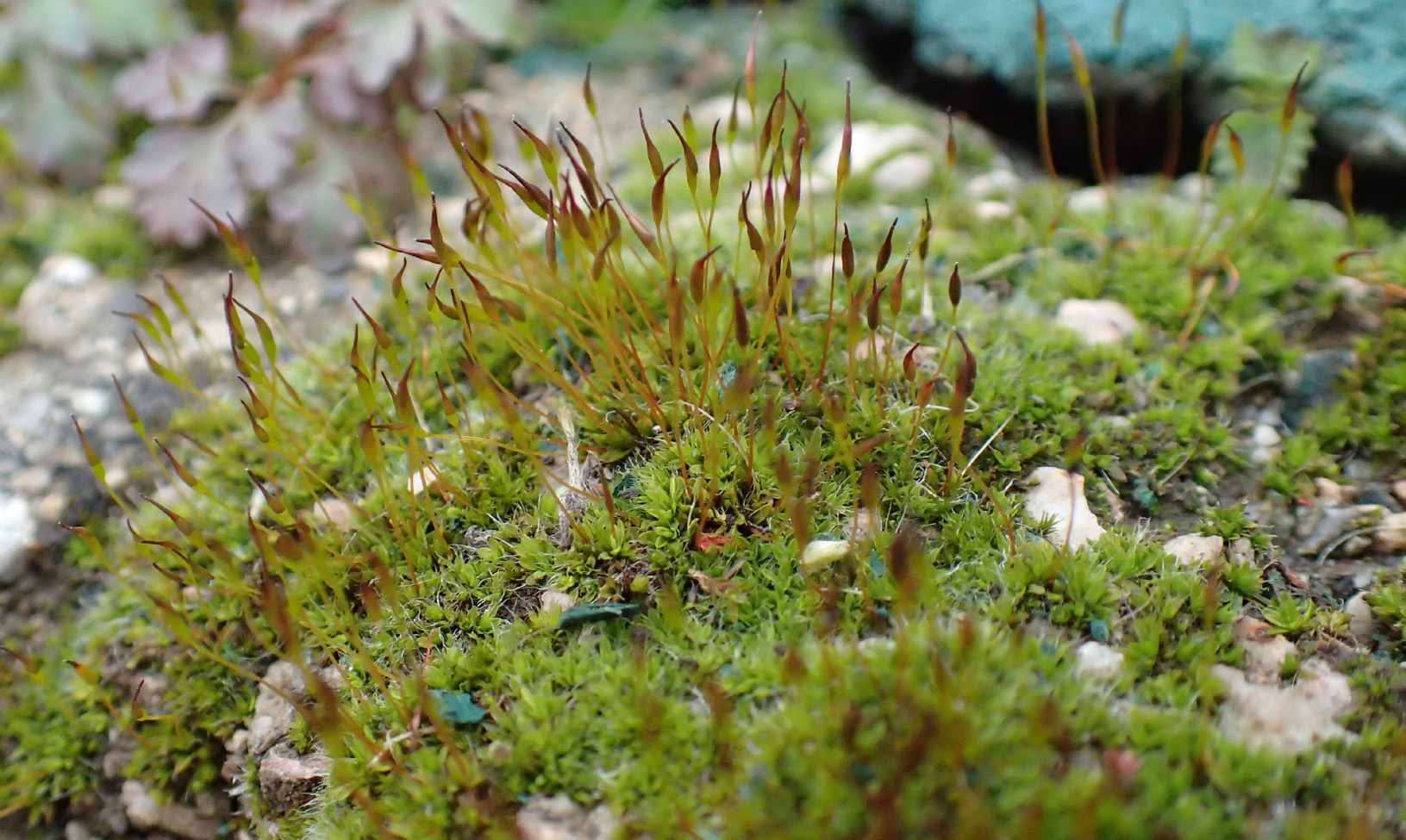
Syntrichia laevipila (Small Hairy Screw-moss): characteristic epiphyte of elders, apple and other trees and associated with O.affine and Z. viridissimus.
Zygodon viridissimus (Green Yoke-moss): epiphyte, distinctive diminutive lemony-green found on elder.
Orthotrichum lyellii (Lyell's Bristle-moss): epiphyte found on trees in Dead Dolphin Wood.
Orthotrichum affine (Wood Bristle-moss): dark green epiphyte found on on tree branches and trunks.
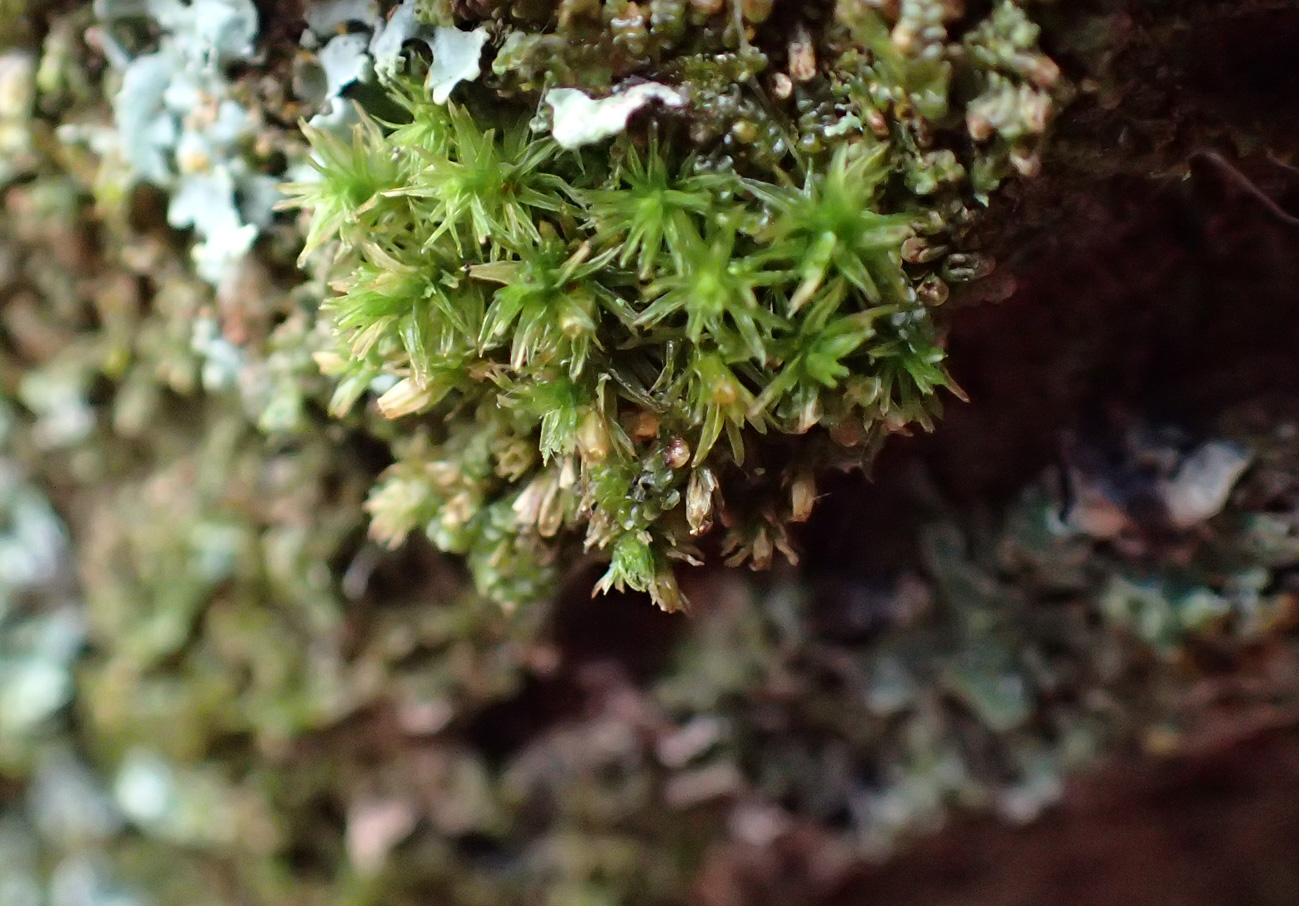
Orthotrichum anomalum (Anomalous Bristle-moss): found on WWII bunkers on the golf course.
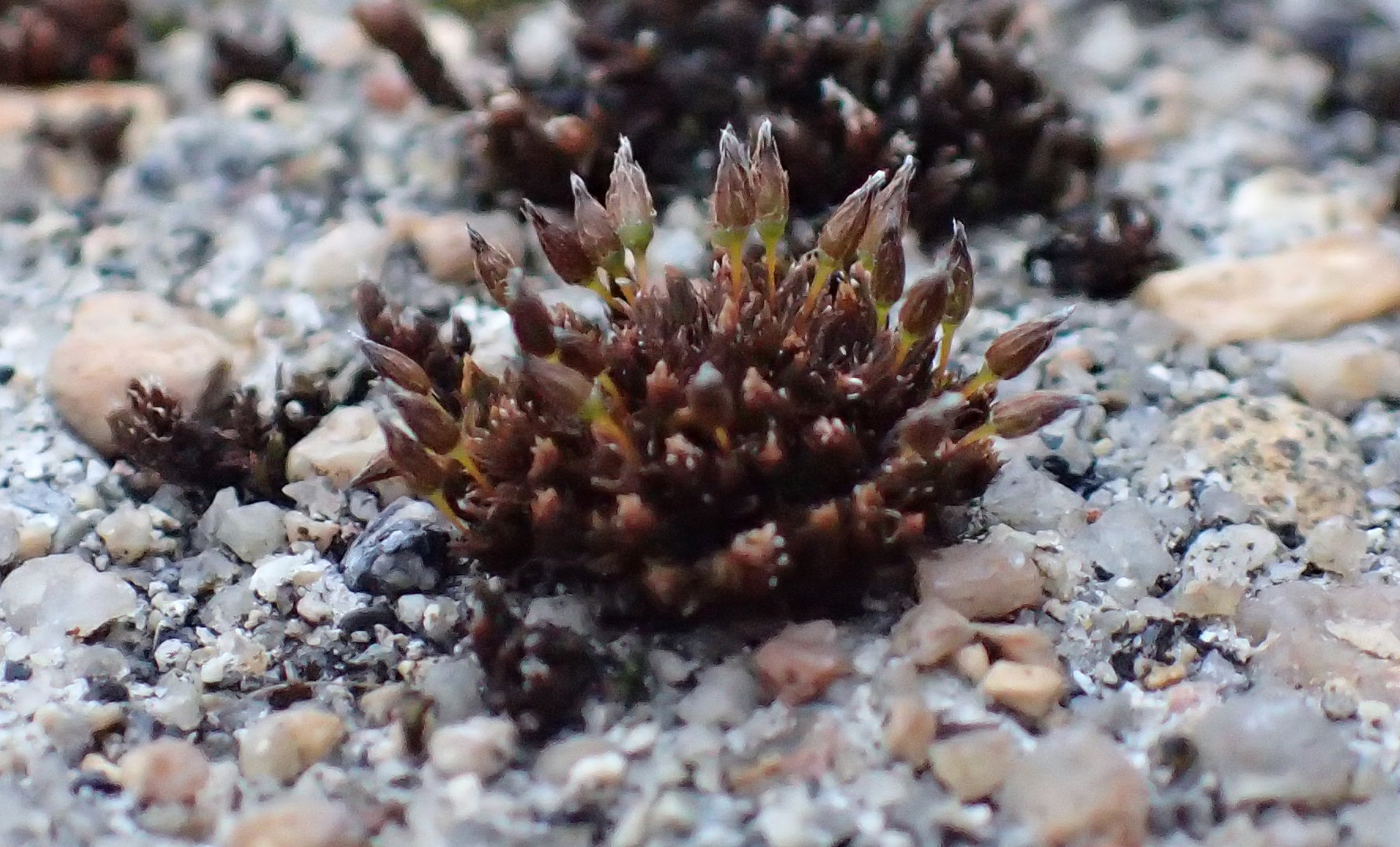
Orthotrichum diaphanum (White-tipped Bristle-moss): epiphyte characterised by thick hyaline point; found on mature elders.
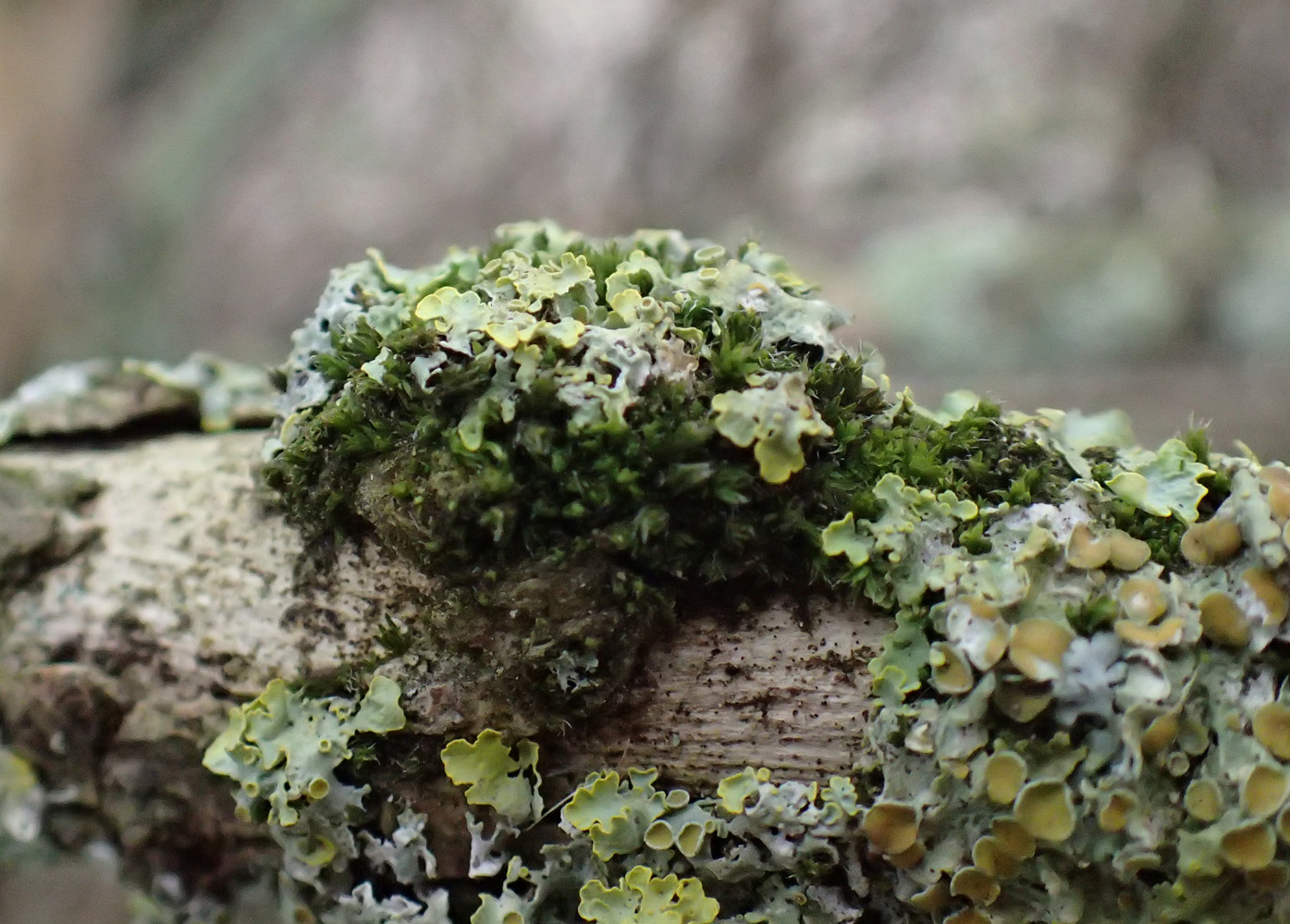
Ulota crispa (Crisped Pincushion): dark green epiphyte on tree branches and trunks.
Ulota bruchii (Bruchi's Pincushion): epiphyte on tree branches around Greenland Lake.
Ulota pylantha (Frizzled Pincushion): epiphyte found on several trees.
Bryum algovicum (Drooping Thread-moss): pioneer species found on seaward dune ridge.
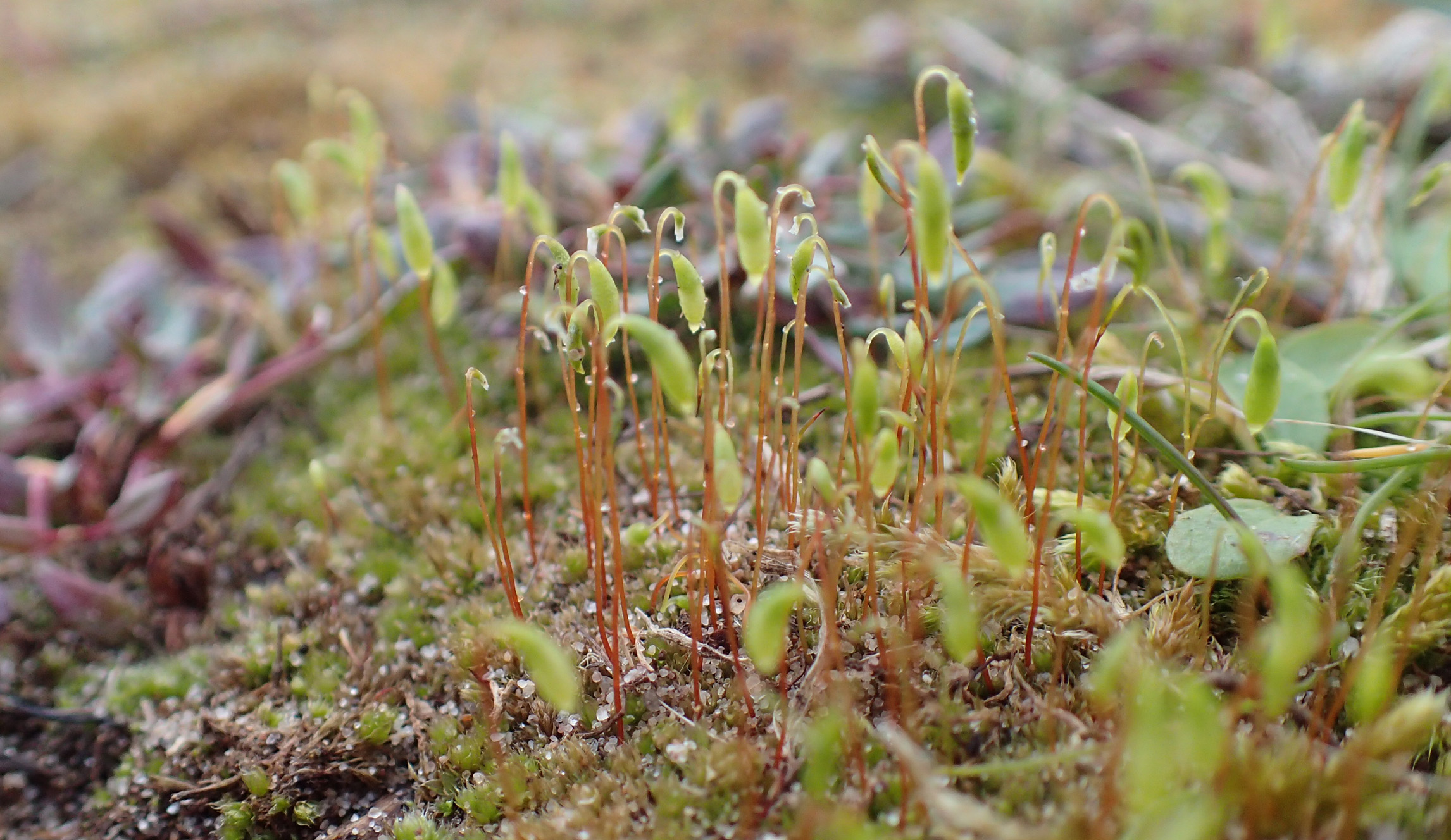
Bryum capillare (Capillary Thread-moss): widespread throughout site.

Bryum pseudotriquetrum (Marsh Bryum): common in areas of dune slack.
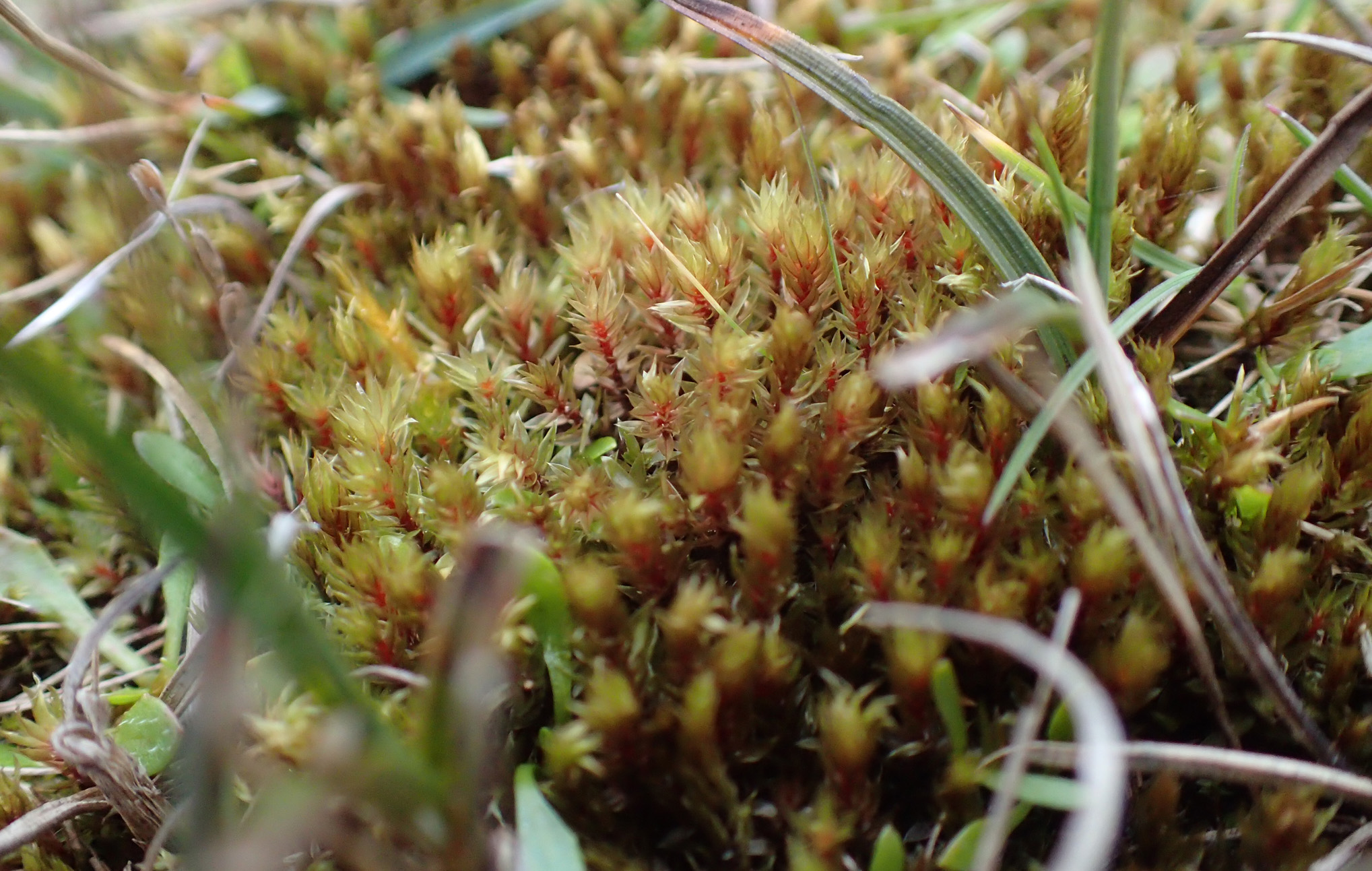
Bryum argenteum (Silver-moss): found on rocks and walls along the railway.
Bryum dichotomum (Bicoloured Bryum): found on areas of bare soil at the western end of the Warren.
Mnium hornum (Swan’s-neck Thyme-moss): discovered by the Go-Karts in 2020.
Campylium stellatum (Yellow Starry Feather-moss): found in small fenced off area of Dune Slack close to visitor centre.
Hygroamblystegium humile (Constricted Feather-moss): rare in Devon, found by the Main Pond in 2019.
Drepanocladus aduncus (Knieff's Hook-moss): found in damper areas of Greenland Lake.
Pseudoscleropodium purum (Neat Feather-moss): common grassland species.
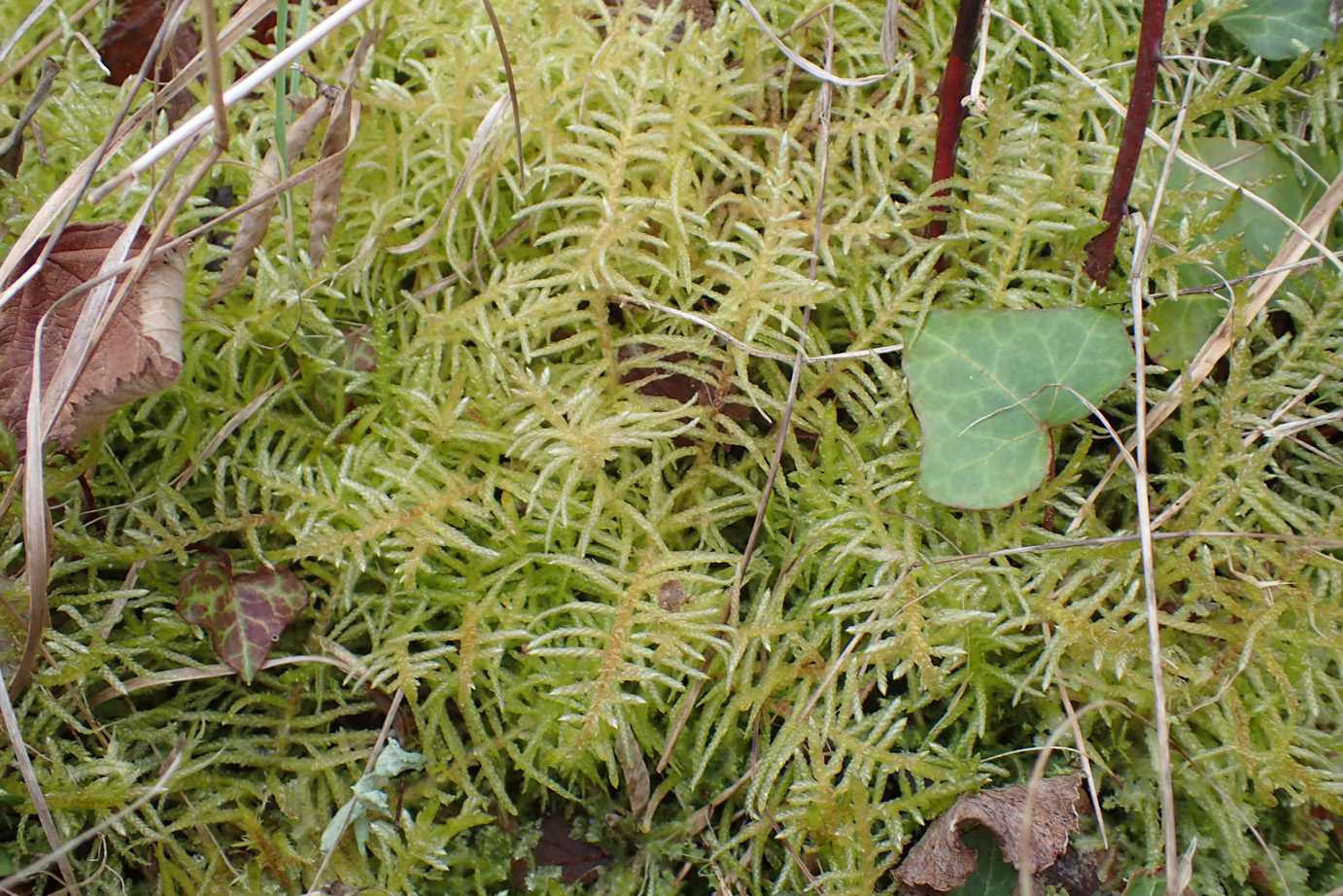
Rhynchostegium confertum (Clustered Feather-moss): irregularly branched and silky moss found at base of several tree species.
Kindbergia praelonga (Common Feather-moss): common in shady areas and damp woodland.
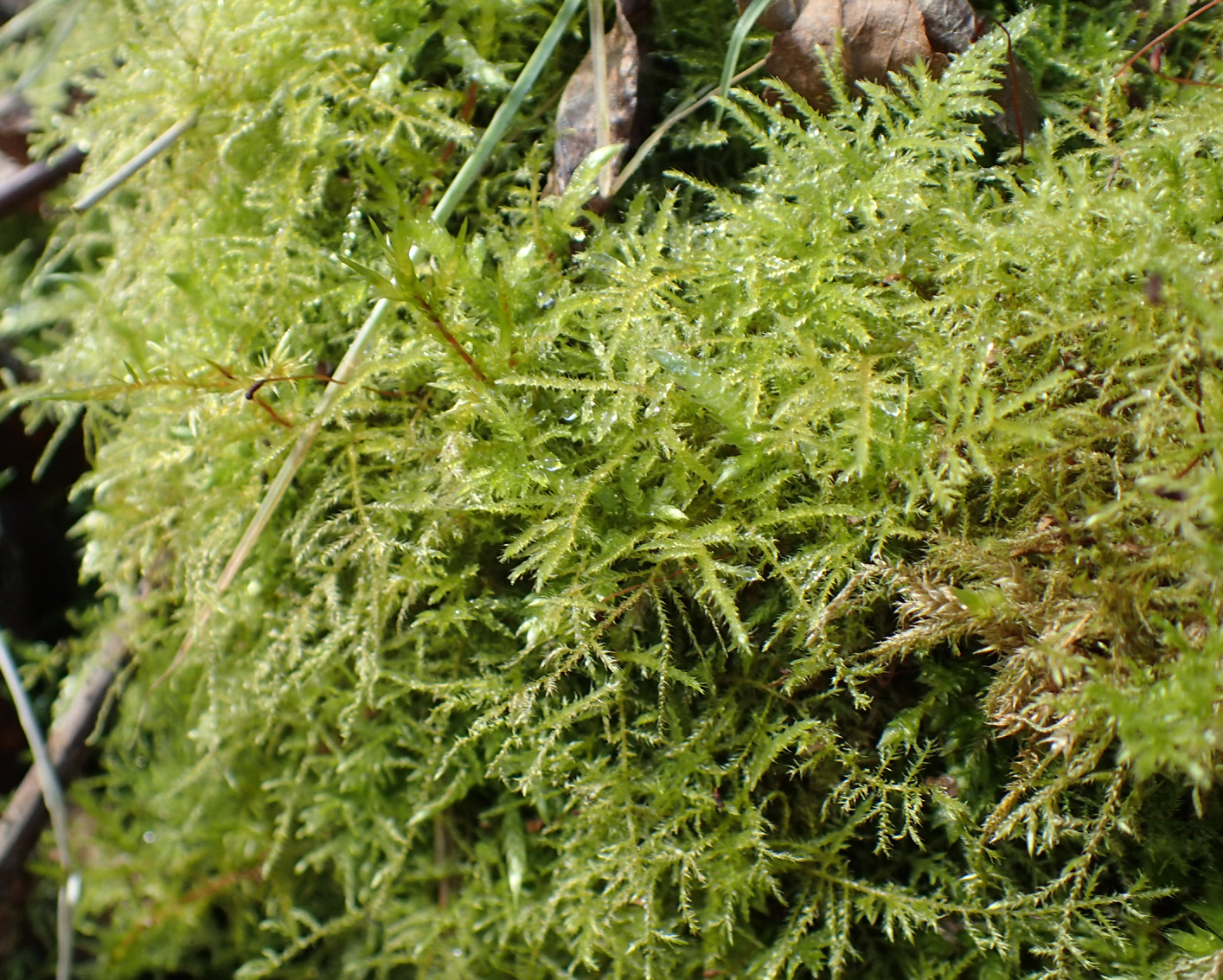
Brachythecium albicans (Whitish Feather-moss): widely distributed
on dune ridge and on drier areas of dune grassland.
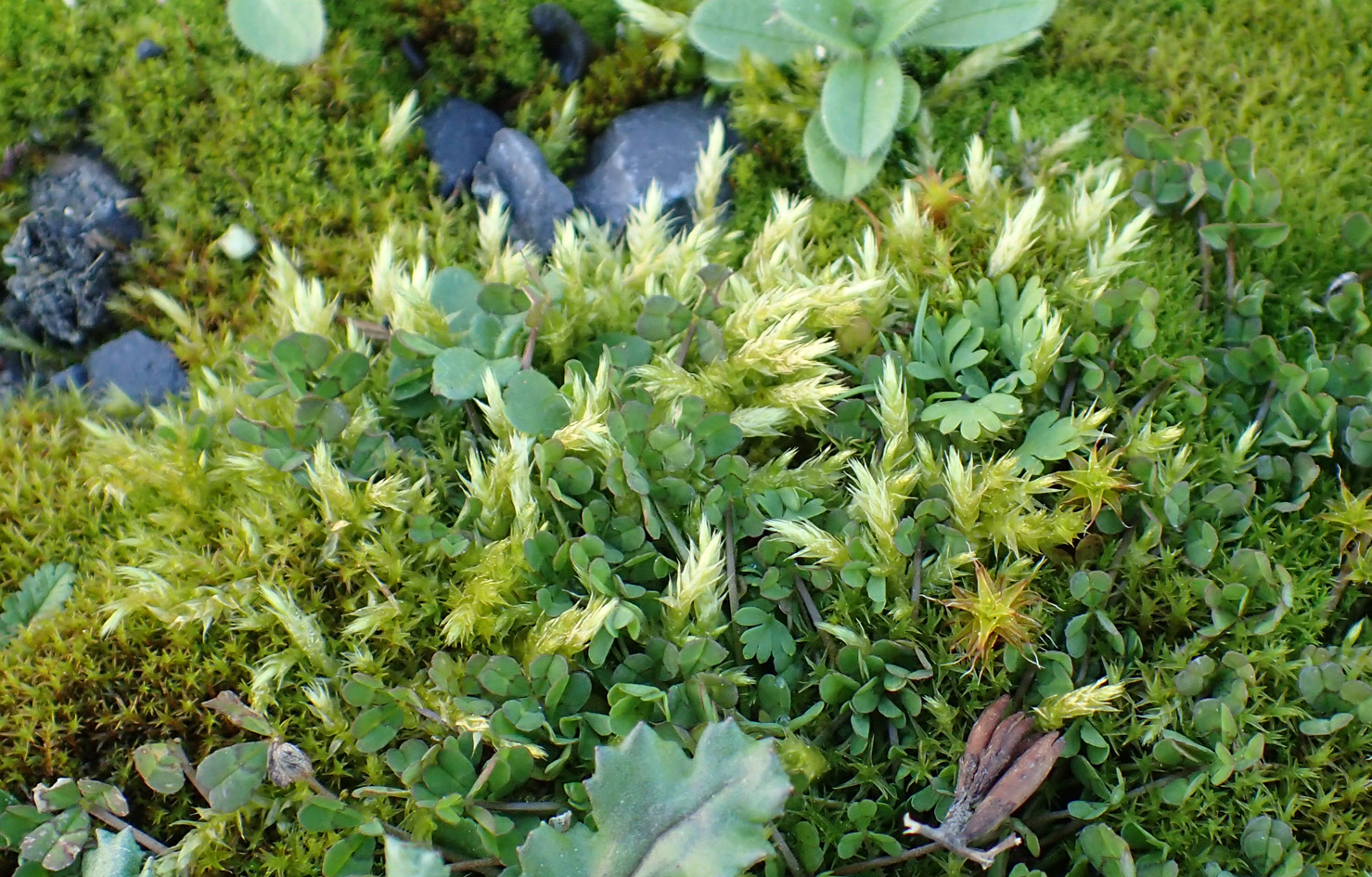
Brachythecium mildeanum (Sand
Feather-moss): only found in one location on dune ridge.
Brachythecium rutabulum (Rough-stalked
Feather-moss): damp woodland on decaying logs, leaf litter and base of
trees.
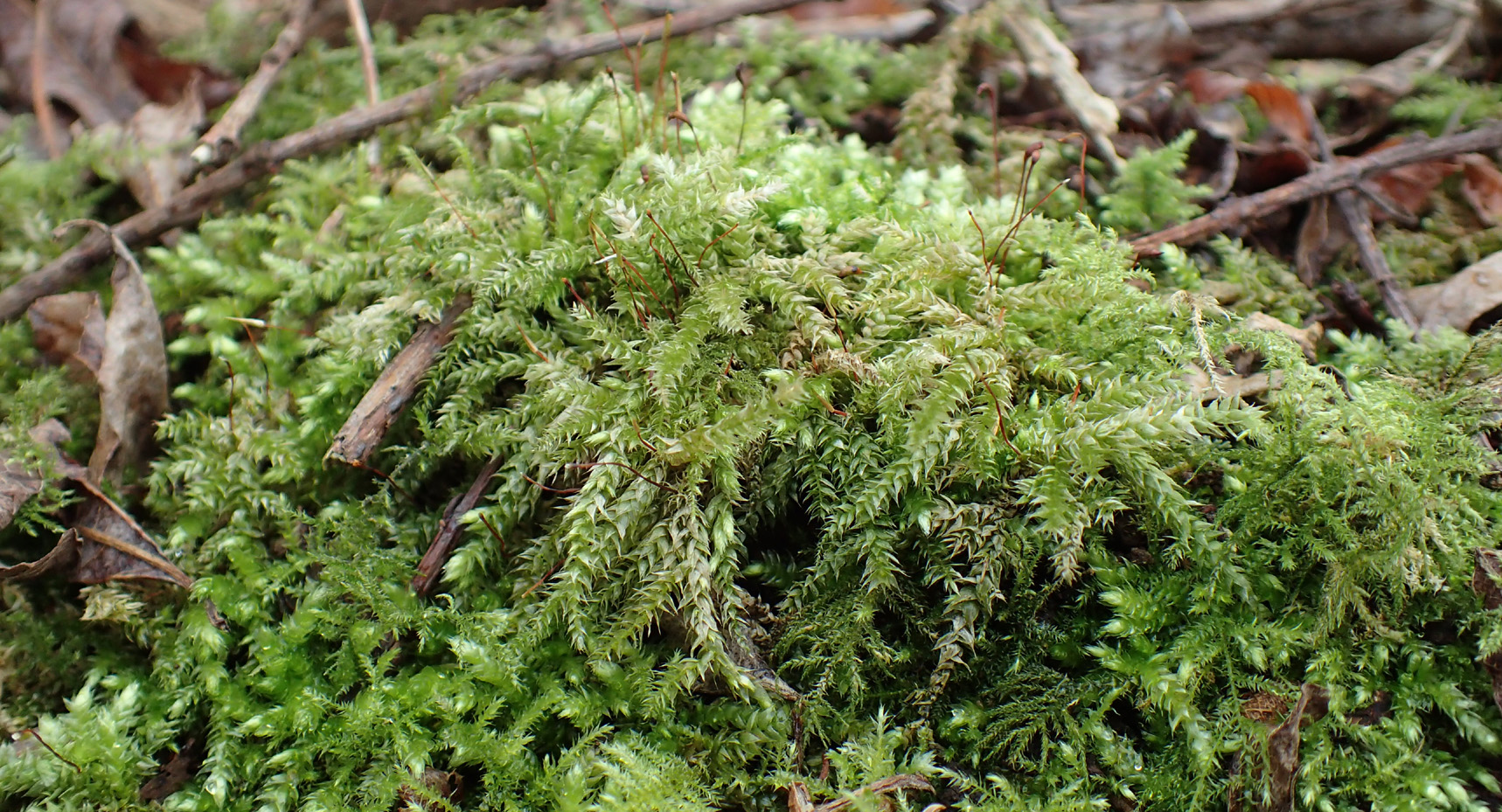
Brachythecium rivulare (River Feather-moss): found in damp woodland.
Homalothecium sericeum (Silky Wall Feather-moss): Found on walls along the railway.
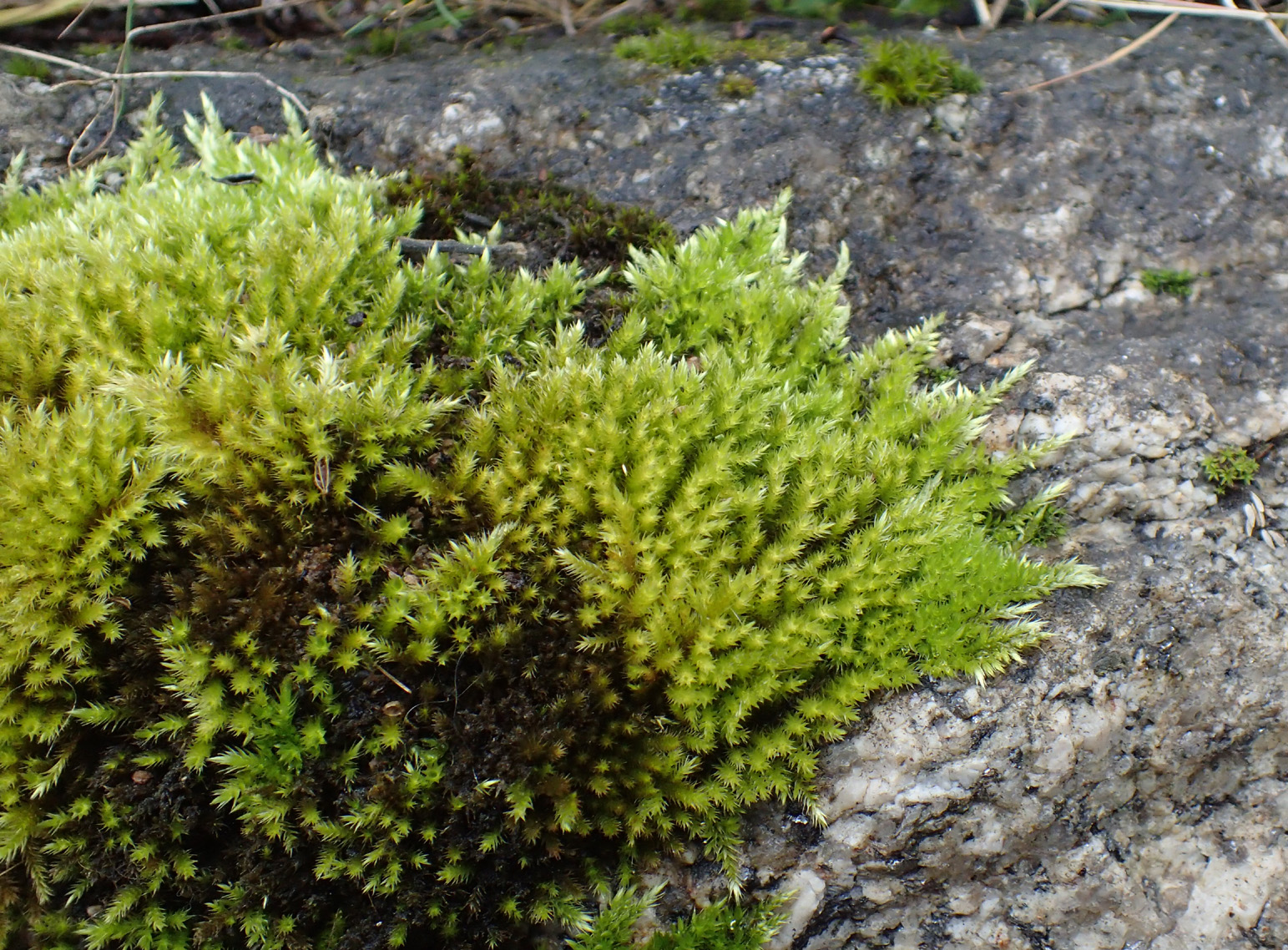
Calliergonella cuspidata
(Pointed Spear-moss): common species of wet grassland and dune slacks.
Hypnum cupressiforme var. filiforme (Plait-moss): found on trunks and branches of many trees.
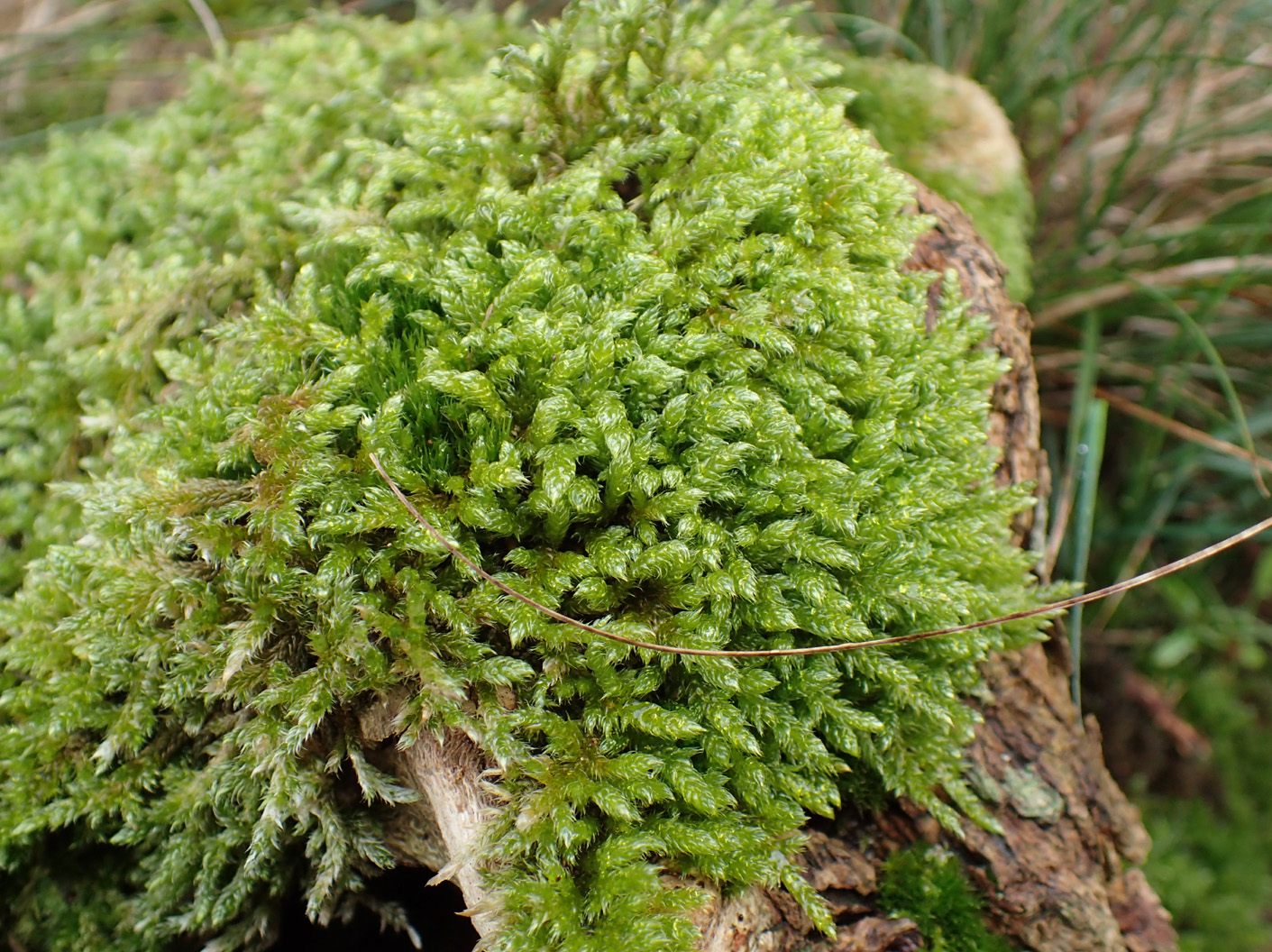
Hypnum cupressiforme var. respunatum (Supine Plait-moss): found at the base of trees.
Hypnum cupressiforme var. tectorum (Cypress-leaved Plait-moss): common grassland species.
Hypnum cupressiforme var. ericetorum (Plait-moss): common grassland species.
Hypnum andoi (Mamillate Plait-moss): epiphyte on shaded trees and rocks.
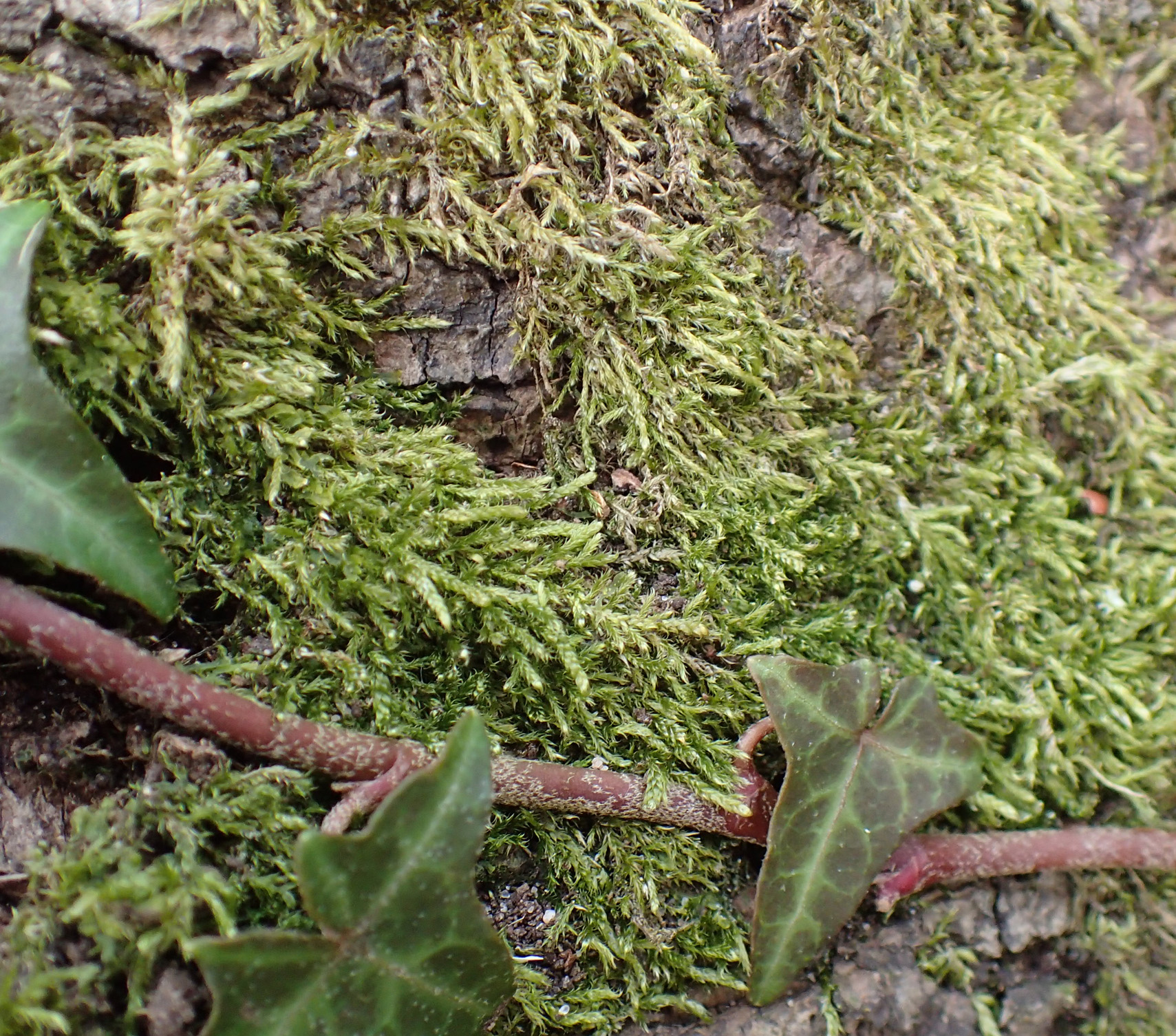
Rhytidiadelphus squarrosus (Springy Turf-moss): common grassland species.
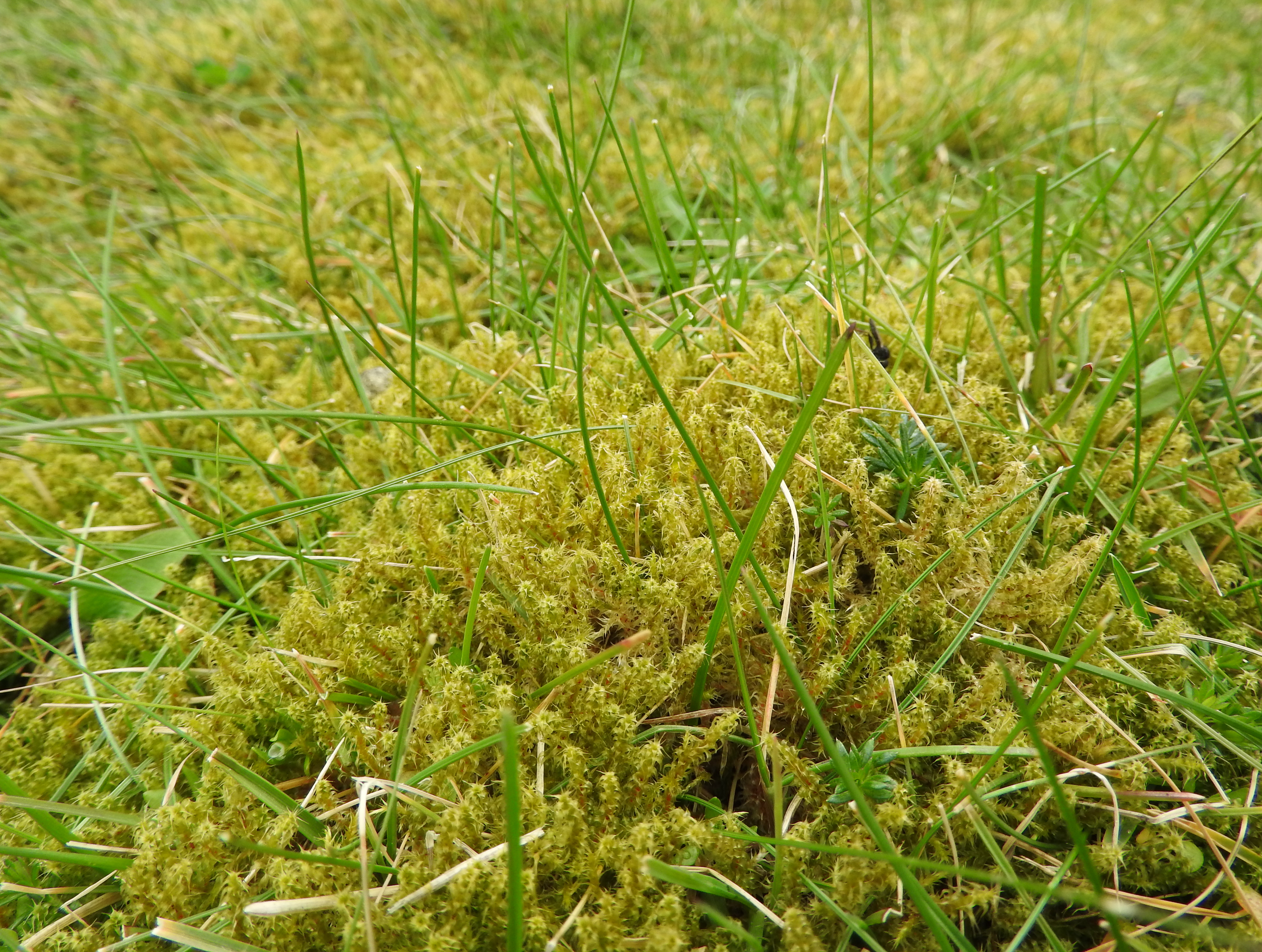
Isothecium mysorouides
(Slender
Mouse-tail Moss): found at the base of a mature willow.
Lichens Related
link:
British Lichen Society
The lichen flora of mobile dune systems is limited and the ones found here are “mostly unexciting”., that said 101 species have bee recorded at the Warren. Ramalina fraxinea, Parmelia carporrhizans and Parmelia pastillifera have been recorded growing on the remaining Sycamores and poplars on site. The UK priority species Pyrenocollema (Collemopsidium) pelvetiae has been recorded from seaweed, its favoured substrate, on the Exe and Teign estuaries and may occur within the Recording Area.
More information and a more complete species list can be found here.
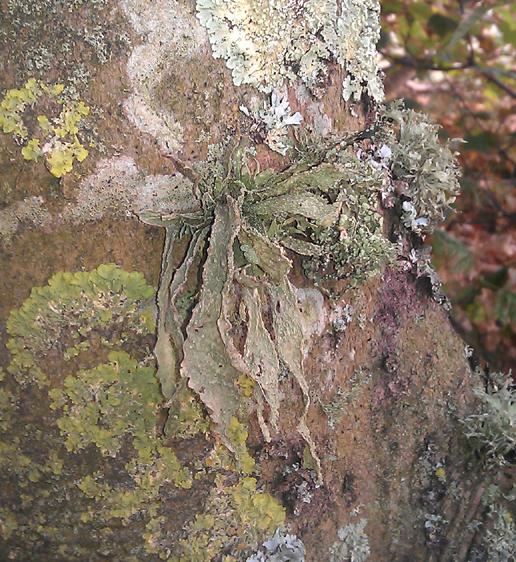
Ramalina fraxinea
Fungi Related
link:
British
Mycological Society
Over 480 different species of fungi have been recorded on site, but the current status of many is uncertain. Five of these species were new to science when first recorded here Conocye dunensis, Cortinarius fulvosquarrosus, Leptonia inocybeoides, Naucoria cephalescens and Nolanea sericeonitens, of these only the first is still known to be present. Other species that regularly occur include puffballs, bird’s nests, earthstars and eyelash fungi. The Blackening Waxcap Hygrocybe conica grows around Greenland Lake, but numbers have declined The Sand Stinkhorn Phallus hadrianii was recorded from the Dune Ridge but not recently.
The full species list can be found here.
Dune Stinkhorn
Algae Related
link:
British Phycological Society
No recording of freshwater algae has taken place with only one terrestrial species recorded. Studies of the area's marine biology has however recorded 48 species of seaweed, this includes the invasive alien Wireweed Sargassum muticum which, along with the sediment from the beach recharge, is unfortunately smothering the Honeycomb Worm (Sabellaria alveolata) reefs at Langstone Rock.